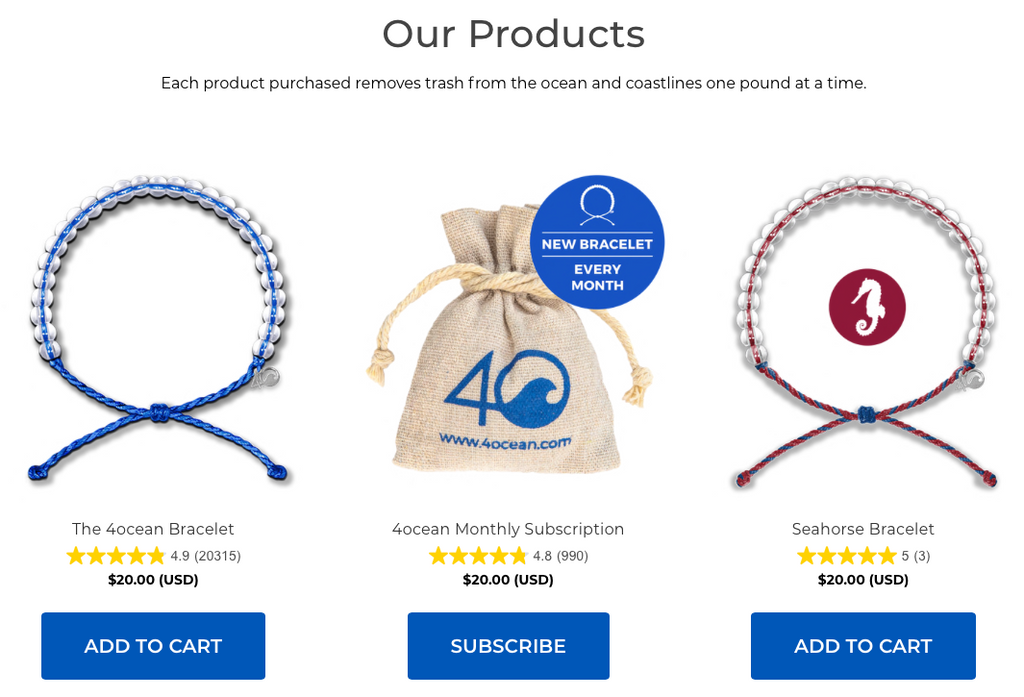Back in 2017, the Florida Keys came into the national spotlight after Hurricane Irma left a large number of the islands in ruins. It was the strongest Atlantic basin hurricane ever recorded and, over a year and a half later, there are still signs of the storm's catastrophic destruction — most notably the large amounts of marine debris scattered throughout the Keys. Many places have yet to reopen since much of the debris has yet to be removed. With this in mind, we knew it was time to take action. We spent the weekend cleaning areas in both the Middle and Upper Keys, areas that were damaged and heavily impacted by the accumulation of marine debris during Hurricane Irma.
On Saturday, we cleaned Bahia Honda State Park
The 4ocean Community Cleanup Team hosted a cleanup with the Florida Department of Environmental Protection's Florida Park Service for a community cleanup event at Bahia Honda State Park on Saturday, March 16, 2019. While the northern area of the park referred to as Sandspur Beach has been closed to the public since Hurricane Irma, park staff kindly granted all of us access to this area so we could begin the cleanup process.
As the Bahia Honda Cleanup was underway, the team from the Coral Restoration Foundation led a group of participants to clean Scout Key - another area that was heavily impacted by Hurricane Irma and a hotspot for where marine debris washes up on shore.

From Sandspur Beach and the surrounding beaches at Bahia Honda State Park, all of the amazing participants removed the following:
- 2,653 plastic bottle caps
- 603 plastic water bottles
- 140 plastic bags
- 135 plastic utensils
- 103 plastic straws
- 68 plastic and styrofoam cups
- 65 styrofoam buoys
- 15 toothbrushes
- 9 cigarette butts
Cigarette butts are generally the most common item collected at our community cleanups. We found a whopping 5,877 of them during a recent cleanup at Siesta Key Beach. At Sandspur Beach, we collected just nine of them! The beach has been closed to the public for the past two years, which is why that number is so unusually low. We were also heartened to see that the rare Sea Lavender plant has been growing in abundance these last two years.
This cleanup was a huge success thanks to the 448 passionate ocean lovers who traveled from far and wide to participate in this event. A special thank you to the park rangers and everyone at Bahia Honda who worked with our team to make this event possible.

On Sunday, we cleaned up an area of John Pennekamp State Park
On Sunday, the 4ocean Community Cleanup Team took a different approach in comparison to our typical public cleanup events. We partnered with the team from NOAA'S Florida Keys National Marine Sanctuary and the Florida State Park System to clean a mangrove island offshore of John Pennekamp Coral Reef State Park. This particular location was scouted out prior to our arrival by John Pennekamp Park Biological Scientist, Trudy Ferraro, who came across an overwhelming amount of marine debris that had washed ashore during Hurricane Irma. Check out the awesome video of the cleanup here!
As our boats approached the island we could see colorful, discarded ropes tangled around the mangroves roots and branches. As we made our way onto land, we were greeted by an array of plastic waste that included everything from small microplastics and hundreds of styrofoam buoys to pieces of plastic so large that the help of multiple people was needed to carry it off the island.
During Hurricane Irma, an estimated 150,000 lobster traps in the Florida Keys were displaced. Some were moved up to 18 miles from their original locations. However, many traps broke apart and a colossal amount of them either washed up on shore or were never found again. The area we focused on restoring had hundreds of styrofoam buoys that had once been part of those lobster traps. Because of Hurricane Irma and other large storms since then, the waves and currents have brought many of them to this small part of the mangrove island where they have endured.
Another huge problem was that a lot of the debris had already broken down to create a massive amount of microplastic. Plastics don't biodegrade. When a plastic item is produced, it never goes away unless it's recycled into a new product. When plastics are exposed to waves, sun, and weather, they become brittle and break apart into smaller and smaller pieces. Many of these plastic pieces are so tiny it's impossible to tell what type of plastic they are, which makes it difficult to identify what can be recycled. Although these small pieces of plastic usually cannot be recycled, we still made sure to remove them as they pose a serious ingestion risk to sea animals who often mistake the brightly colored plastic pieces for food.
While the task seemed impossible at first, our teams accepted the challenge head-on and by the end of the day, we had filled an entire dumpster with marine debris that will never find its way back to the ocean.
Check out these before and after pictures to see the enormous impact we have when we work together!
To get in on the conversation about ocean plastic pollution, head on over to our Discover 4ocean Facebook Group. Also, make sure to follow us on Facebook, Instagram, and Twitter to stay up to date on all things 4ocean!







